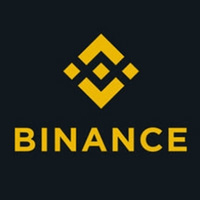-
Why does the Bitcoin network need to expand
-
Date:2024-08-16 18:46:26 Channel:Crypto Read:
Discussion on the necessity of Bitcoin network expansion
As a decentralized digital currency, Bitcoin has experienced many technological iterations and market fluctuations since its launch in 2009, attracting global attention and investment. With the surge in the number of users and the increasing frequency of transactions, the Bitcoin network faces serious expansion issues. This article will explore in depth why the Bitcoin network needs to expand, analyze the reasons behind it, and propose possible solutions.
The core design concept of Bitcoin is decentralization and security, which makes it slower in transaction confirmation than other payment methods. The Bitcoin network generates a block every ten minutes, and the size of each block is limited to 1MB. This means that when the network is busy, the confirmation time of transactions may be extended, and even cause transaction congestion. Take 2017 as an example. At that time, the price of Bitcoin soared, users poured in, and transaction fees also rose, resulting in many users' transactions not being confirmed for a long time. This situation not only damaged the user experience, but also affected the practicality of Bitcoin as a currency.
To better understand the need to scale the Bitcoin network, we need to consider several key factors.
First, the growth of the user base is an important reason for the expansion of the Bitcoin network. As more and more people begin to accept digital currencies, especially Bitcoin, the burden on the network is also increasing. According to the latest statistics, the number of Bitcoin users has exceeded 100 million, and this number is still growing. With the increase in users, the transaction volume of the network is also increasing. The original 1MB block limit is obviously unable to meet the growing demand. Imagine if the number of residents in a city doubles, but the roads are not expanded, traffic congestion will be inevitable.
Secondly, the high frequency of transactions has led to congestion in the Bitcoin network, further exacerbating the need for expansion. In the Bitcoin network, the peak period of transactions usually occurs when the market fluctuates greatly, such as when prices soar or plummet. At this time, users rush to buy or sell, the transaction volume surges, and the network burden increases. In 2018, as the price of Bitcoin fluctuated, the network transaction fee soared to an average of tens of dollars per transaction, and many users were forced to wait or even give up transactions. This phenomenon not only affected the user's trading experience, but also suppressed the liquidity of Bitcoin.
Furthermore, capacity expansion can enhance Bitcoin's competitiveness. As more and more digital currencies enter the market, users' choices become more diverse. Many emerging blockchain projects attract users by increasing transaction speeds and reducing handling fees. If Bitcoin cannot effectively expand capacity, it may lead to user loss and affect its market position. As the "gold standard" of digital currencies, Bitcoin must continue to adapt to market changes to maintain its leading position.
In addition to the above factors, technological advances have also made it possible for the Bitcoin network to expand. In recent years, many technical solutions such as the Lightning Network have emerged to improve the transaction efficiency and scalability of Bitcoin. The Lightning Network creates off-chain transaction channels, allowing users to conduct fast and low-cost transactions, thereby reducing the burden on the main chain. This innovation not only enhances the practicality of Bitcoin, but also provides new ideas for its expansion.
Bitcoin network expansion is not as simple as just increasing the block size. It involves many aspects such as network security, decentralization, and user trust. If the capacity is expanded excessively, it may lead to the centralization of the network, which in turn affects its security. Therefore, in the process of expansion, it is necessary to find a balance between efficiency and security.
In order to achieve effective expansion, community consensus is crucial. Bitcoin developers, miners, and users need to participate in the expansion discussion and reach a consensus. As Bitcoin's founder Satoshi Nakamoto emphasized, the decentralized nature of Bitcoin allows Bitcoin to avoid single points of failure, and this feature also requires the community to be consistent on the issue of expansion.
In practice, some successful expansion cases are worth learning from. For example, when facing network congestion, Ethereum introduced sharding technology to improve the scalability of the network. Sharding technology divides the network into multiple small parts, so that each part can process transactions independently, thereby improving the overall transaction throughput. This idea provides new inspiration for Bitcoin's expansion.
In the future, the expansion of the Bitcoin network will be an ongoing process. As technology continues to advance, new expansion plans will continue to emerge. The Bitcoin community needs to maintain an open attitude and actively explore diverse expansion plans to meet the growing market demand.
In summarizing the necessity of Bitcoin network expansion, there are several key points worth emphasizing. First, the growth of the user base and the increase in transaction frequency are the main driving forces for expansion. Second, technological innovation provides new possibilities for expansion, but the security and decentralization of the network need to be fully considered during implementation. Finally, community consensus is the basis for achieving effective expansion. Only with the joint efforts of all parties can Bitcoin continue to maintain its leading position in the future digital currency competition.
The future of Bitcoin is full of uncertainty, but it is certain that expansion will be an integral part of its development. In this rapidly changing market, only by constantly adapting and innovating can Bitcoin truly realize its potential as "digital gold" and become a widely accepted payment tool for users around the world. Through continuous technological progress and the joint efforts of the community, the Bitcoin network will be able to meet future challenges and usher in a better tomorrow.
The four most famous international exchanges:
Binance INTL
OKX INTL
Gate.io INTL
Huobi INTL




China Line APP DL China Line APP DL
China Line APP DL
China Line APP DL
Note: The above exchange logo is the official website registration link, and the text is the APP download link.

The Bitcoin network is a blockchain network consisting of nodes around the world. These nodes are interconnected through the Internet and jointly maintain Bitcoin transaction records and security. Bitcoin network expansion refers to the method of improving and upgrading the basic protocol of the Bitcoin network to increase its transaction throughput and processing capacity. In recent years, regarding the question of whether the Bitcoin network needs to be expanded, Bitcoin supporters are divided into radicals who believe that expansion is necessary and conservatives who believe that expansion is not necessary. There are also many novice investors who want to know why the Bitcoin network needs to be expanded? Next, let the editor of the currency circle give you a detailed answer.
Why does the Bitcoin network need to expand?
The Bitcoin community has been exploring and discussing various expansion plans, such as increasing block size, introducing second-layer solutions (such as the Lightning Network), optimizing consensus algorithms, etc. These expansion plans aim to increase the throughput of the Bitcoin network, reduce transaction confirmation time, and improve the scalability of the network to meet the growing needs of users. Below, the Bitcoin Circle editor will introduce several reasons why the Bitcoin network needs to be expanded:
1. Transaction throughput limit: The size of each block in the Bitcoin network is limited, and the number of transactions that can be accommodated in each block is also limited. This results in the Bitcoin network being able to process only a limited number of transactions per second, thus limiting the transaction throughput of the entire network. With the popularity of Bitcoin and the increase in transaction volume, the network's processing capacity needs to be increased.
2. Extended transaction confirmation time: The average block confirmation time of the Bitcoin network is about 10 minutes. This means that a transaction may need to wait for several blocks before being confirmed, especially when the network is congested. Long confirmation time may not be suitable for some real-time transactions and payment scenarios, so the transaction confirmation time needs to be shortened.
3. Increased transaction fees: As the Bitcoin network becomes more congested and transaction demand increases, transaction fees are likely to increase. Transaction initiators need to pay miner fees to attract miners to verify and package their transactions. When the network is congested, transaction fees may rise, resulting in higher transaction costs.
4. Network scalability issues: The number of full nodes in the Bitcoin network is limited, and full nodes need to store and process all transaction data of the entire blockchain. This places high demands on node resources, limiting the scalability and participation of the network. In order to enable more users to participate in the Bitcoin network, it is necessary to improve the scalability of the network and reduce the resource requirements of the nodes.
What are the Bitcoin expansion plans?
There are four types of Bitcoin expansion solutions, namely non-upgrade expansion, side chain expansion, upgrade expansion and one-way transfer. The details are as follows:
Non-upgradeable expansion:
Non-upgradeable expansion means that there will be no new inventions or changes to Bitcoin's existing technical system, and only certain specific expansions will be made using Bitcoin's existing features. The technical solutions for non-upgradeable expansions are all decentralized, and the overall consensus of the Bitcoin community is not required for implementation difficulty. However, RGB technology cannot rely on the ledger consensus security of the Bitcoin mainnet, and the scalability of Bitcoin transaction scripts is very limited.
Side chain type:
The sidechain type is to create a separate public chain and connect it to the Bitcoin mainnet through a specific cross-chain technology. This was once the most popular and easiest direction for Bitcoin ecosystem expansion. The main reason is that sidechain projects can generally issue their own tokens, and the issuance of tokens and the increase in market value will attract the attention of the community, thus bringing about a hot market.
Smart contracts can be supported on the side chain, and various decentralized applications such as DeFi can be built. It has strong scalability and is not difficult to implement compared to other solutions. At the same time, the ledger is relatively safe. However, not everyone can run the side chain node, and the ledger consensus depends on the management of certain central institutions. The degree of decentralization is low, which may be the main reason why many attempts at side chain expansion solutions have failed to gain large-scale application.
Upgradeable expansion:
Upgrade expansion means upgrading the technical architecture or technical system of the Bitcoin network, one of which is represented by LayerTwo
The BIP-300/301 protocol proposed by the Labs team. The concept of its expansion method is Drivechain, which essentially uses the Rollup method to expand capacity.
The current approach of Labs is to directly hard fork a PoW blockchain Mainchain with BIP-300/301. When the Bitcoin community reaches consensus and recognizes the Mainchain, the Bitcoin mainnet will be upgraded to BIP300/301.
LayerTwo
Labs' solution can ensure the degree of decentralization of Bitcoin and solve the scalability problem, but its expansion and upgrade requires the unanimous consensus of the Bitcoin community to advance. Judging from the overall atmosphere of the current community, it is extremely difficult to upgrade the Bitcoin mainnet.
One-way transfer type:
Bitcoin bidirectional transfer is a common method for cross-chain and sidechain, while Bitcoin unidirectional transfer expansion solution is currently proposed by Hacash community and Hacash.com team. The principle is to transfer Bitcoin irreversibly to a new chain that is theoretically more decentralized than Bitcoin and has a more mature technical architecture, and then expand the capacity through a multi-layer approach.
The Hacash chain that accepts the one-way transfer of BTC is still a pure PoW consensus mechanism. Everyone can run the full node, and the degree of decentralization and security are not inferior to the original Bitcoin chain. Layer2 and Layer3 based on this solve the expansion problem. Anyone can transfer their BTC to the Hacash main network in one direction. It is up to each Bitcoin holder to decide whether the Bitcoin in their hands needs to be expanded. The implementation difficulty is relatively simple compared to other solutions, and the selectivity is strong.
The above is the detailed answer from the editor of Biquanqun to the question of why the Bitcoin network needs to be expanded. In order to meet the growing transaction demand, increase transaction throughput, reduce transaction fees, increase transaction speed and confirmation time, improve user experience, support more application scenarios, and enhance the scalability and decentralization of the network, the expansion of the Bitcoin network is a necessary way to enable the sustainable development of Bitcoin in the future, which will help enhance the practicality and acceptability of Bitcoin and promote its widespread application around the world, so as to develop into a global digital currency and means of value storage.
I'll answer.
Articles related to tags
- US Senator Bitcoin can vote with its feet Don’t create a hosti
- How to trade OK Wallet coins OK Wallet Trading Tutorial
- Taking stock of the mysterious creators of Bitcoin Who are thes
- How to download the Pancake Exchange APP Pancakeswap official w
- How to buy Litecoin Cash LCC Currency Buying and Trading Tutori
- What does Bitcoin quarterly contract mean Popular explanations
- Being bombarded by Ponzi scheme and environmental public opinion
- Rich Dad author Global economy may collapse Bitcoin is worth $
- Bitcoin price dropped by half What are Bitcoin miners and minin
- What should I do if my Bitcoin position is liquidated Do I have
user
2480
Ask
979K+
reading
0
Answer
3H+
Upvote
2H+
Downvote
-
 Artery Network(ARTR幣)在那裏挖?ArteryNetwork(ARTR幣)是一種新興的加密貨幣,它的採礦過程與比特幣和以太幣等其他加密貨幣類似。ARTR幣的挖礦過程是通過計算機資源解決複雜的數學問題來獲取新的幣。這一過程需要大量的計算能力和電力,因此挖礦者需要投入相應的硬件和電力成本。 A2025-03-26 21:33:09
Artery Network(ARTR幣)在那裏挖?ArteryNetwork(ARTR幣)是一種新興的加密貨幣,它的採礦過程與比特幣和以太幣等其他加密貨幣類似。ARTR幣的挖礦過程是通過計算機資源解決複雜的數學問題來獲取新的幣。這一過程需要大量的計算能力和電力,因此挖礦者需要投入相應的硬件和電力成本。 A2025-03-26 21:33:09 -
 Litbinex Coin(LTB幣)走勢如何LitbinexCoin LTB幣 作為一種加密貨幣,其價格走勢取決於市場供求和投資者對其價值的認知。在過去的一段時間裡,LTB幣的價格可能出現了一些波動,這可能是由於市場情緒、新聞事件或技術因素所引起的。 在過去的幾個月中,全球加密貨幣市場經歷了一些波動2025-03-26 21:33:03
Litbinex Coin(LTB幣)走勢如何LitbinexCoin LTB幣 作為一種加密貨幣,其價格走勢取決於市場供求和投資者對其價值的認知。在過去的一段時間裡,LTB幣的價格可能出現了一些波動,這可能是由於市場情緒、新聞事件或技術因素所引起的。 在過去的幾個月中,全球加密貨幣市場經歷了一些波動2025-03-26 21:33:03 -
 Starbound(SBD幣)最新動態SBD幣,即Starbound,是一种基于区块链技术的加密货币,旨在为用户提供一种快速、安全和低成本的支付方式。最近,Starbound团队宣布了一系列重大动态,以提升其在加密货币市场的地位和影响力。 首先,Starbound团队宣布他们已经与几家知名的加2025-03-26 21:32:59
Starbound(SBD幣)最新動態SBD幣,即Starbound,是一种基于区块链技术的加密货币,旨在为用户提供一种快速、安全和低成本的支付方式。最近,Starbound团队宣布了一系列重大动态,以提升其在加密货币市场的地位和影响力。 首先,Starbound团队宣布他们已经与几家知名的加2025-03-26 21:32:59 -
 Catcoin(CATS幣)最新新聞最新消息指出,Catcoin(CATS幣)在近期取得了巨大的成功,吸引了越來越多投資者的關注。這種加密貨幣是專為貓主人和貓愛好者而設計的,旨在建立一個支持貓咪社群的加密支付系統。 Catcoin的價值一直在不斷上漲,吸引了許多散戶和機構投資者的投入。這種加2025-03-26 21:32:54
Catcoin(CATS幣)最新新聞最新消息指出,Catcoin(CATS幣)在近期取得了巨大的成功,吸引了越來越多投資者的關注。這種加密貨幣是專為貓主人和貓愛好者而設計的,旨在建立一個支持貓咪社群的加密支付系統。 Catcoin的價值一直在不斷上漲,吸引了許多散戶和機構投資者的投入。這種加2025-03-26 21:32:54 -
 YFPI(YFPI幣)最新資訊YFPIYFPI幣是一種加密貨幣,它是由一個名為YFPI的去中心化金融平台所發行的。YFPI的目標是成為一個具有高度流動性和穩定價值的加密貨幣,讓用戶可以更方便地進行交易和支付。 最近,YFPI的價格一直在波動,受到市場情緒和投資者信心的影響。儘管如此,Y2025-03-26 21:32:49
YFPI(YFPI幣)最新資訊YFPIYFPI幣是一種加密貨幣,它是由一個名為YFPI的去中心化金融平台所發行的。YFPI的目標是成為一個具有高度流動性和穩定價值的加密貨幣,讓用戶可以更方便地進行交易和支付。 最近,YFPI的價格一直在波動,受到市場情緒和投資者信心的影響。儘管如此,Y2025-03-26 21:32:49 -
 WaveEduCoin(WEC幣)是詐騙?WaveEduCoinWEC幣是一個虛擬貨幣項目,宣稱旨在為教育領域提供解決方案。然而,有人對這個項目提出了質疑,認為WaveEduCoinWEC幣可能是一個詐騙項目。 首先,WaveEduCoinWEC幣的團隊背景和專業性受到質疑。許多投資者發現他們在官2025-03-26 21:32:43
WaveEduCoin(WEC幣)是詐騙?WaveEduCoinWEC幣是一個虛擬貨幣項目,宣稱旨在為教育領域提供解決方案。然而,有人對這個項目提出了質疑,認為WaveEduCoinWEC幣可能是一個詐騙項目。 首先,WaveEduCoinWEC幣的團隊背景和專業性受到質疑。許多投資者發現他們在官2025-03-26 21:32:43 -
 Pegs Shares(PEGS幣)符合當地法律嗎PegsShares(PEGS幣)是一種加密貨幣,目前在市場上並無法得到明確的法律規範。然而,對於加密貨幣的法律規定在各國各地可能有所不同,因此在使用和投資這種加密貨幣時需要謹慎對待。 在一些國家,加密貨幣被視為合法的貨幣形式,並受到相應的法律保護。然而,2025-03-26 21:32:36
Pegs Shares(PEGS幣)符合當地法律嗎PegsShares(PEGS幣)是一種加密貨幣,目前在市場上並無法得到明確的法律規範。然而,對於加密貨幣的法律規定在各國各地可能有所不同,因此在使用和投資這種加密貨幣時需要謹慎對待。 在一些國家,加密貨幣被視為合法的貨幣形式,並受到相應的法律保護。然而,2025-03-26 21:32:36 -
 JUS Token(JUS幣)總部在那JUSTokenJUS幣是一家总部位于新加坡的加密货币公司。新加坡是一个国际金融中心,拥有完善的法律体系和监管机制,吸引了许多加密货币和区块链公司选择在这里设立总部。 JUSTokenJUS幣总部位于新加坡的好处包括: 1 法律体系完善:新加坡的法律体系健2025-03-26 21:32:30
JUS Token(JUS幣)總部在那JUSTokenJUS幣是一家总部位于新加坡的加密货币公司。新加坡是一个国际金融中心,拥有完善的法律体系和监管机制,吸引了许多加密货币和区块链公司选择在这里设立总部。 JUSTokenJUS幣总部位于新加坡的好处包括: 1 法律体系完善:新加坡的法律体系健2025-03-26 21:32:30 -
 I-COIN(ICN幣)非法傳銷ICN幣是一種加密貨幣,類似於比特幣或以太幣,通過區塊鏈技術進行交易和存儲價值。然而,近年來有一些人利用ICN幣進行非法傳銷活動,給投資者帶來了風險和損失。 非法傳銷是指通過招聘下線、忽悠投資者參與項目來賺取高額回報的行為。在ICN幣的非法傳銷中,一些不法2025-03-26 21:32:27
I-COIN(ICN幣)非法傳銷ICN幣是一種加密貨幣,類似於比特幣或以太幣,通過區塊鏈技術進行交易和存儲價值。然而,近年來有一些人利用ICN幣進行非法傳銷活動,給投資者帶來了風險和損失。 非法傳銷是指通過招聘下線、忽悠投資者參與項目來賺取高額回報的行為。在ICN幣的非法傳銷中,一些不法2025-03-26 21:32:27 -
 Glitch Protocol(GLCH幣)交易合法不GlitchProtocol(GLCH幣)是一種加密貨幣,其交易合法性取決於當地政府對加密貨幣的規定和監管。在一些國家,加密貨幣被視為合法的資產,可以自由交易和使用。然而,在一些國家,政府可能對加密貨幣實施嚴格的監管措施,甚至禁止其交易。 若要確定Glit2025-03-26 21:32:20
Glitch Protocol(GLCH幣)交易合法不GlitchProtocol(GLCH幣)是一種加密貨幣,其交易合法性取決於當地政府對加密貨幣的規定和監管。在一些國家,加密貨幣被視為合法的資產,可以自由交易和使用。然而,在一些國家,政府可能對加密貨幣實施嚴格的監管措施,甚至禁止其交易。 若要確定Glit2025-03-26 21:32:20
-
 Cat(CAT幣)的交易量CAT幣是一種虛擬貨幣,目前在加密貨幣市場中交易量相對較小。然而,隨著加密貨幣市場的不斷發展和成長,CAT幣的交易量也在逐漸增加。 CAT幣的交易量取決於市場需求和供應情況,以及交易所的交易活動。一般來說,CAT幣的交易量可能會受到市場情緒、新聞事件、技術2025-03-26 21:34:43
Cat(CAT幣)的交易量CAT幣是一種虛擬貨幣,目前在加密貨幣市場中交易量相對較小。然而,隨著加密貨幣市場的不斷發展和成長,CAT幣的交易量也在逐漸增加。 CAT幣的交易量取決於市場需求和供應情況,以及交易所的交易活動。一般來說,CAT幣的交易量可能會受到市場情緒、新聞事件、技術2025-03-26 21:34:43 -
 紅域(巧克力)(QKL幣)涉嫌詐騙紅域(巧克力)(QKL幣)是一種虛擬貨幣,近期涉嫌詐騙的傳聞不斷。根據一些用戶的投訴和報導,有人聲稱在投資這個虛擬貨幣時遭受了損失,而且無法取回投資的資金。 在這種情況下,投資者應該格外小心,避免受騙。首先,要確保所投資的虛擬貨幣是合法的,有穩定的背景和可2025-03-26 21:34:37
紅域(巧克力)(QKL幣)涉嫌詐騙紅域(巧克力)(QKL幣)是一種虛擬貨幣,近期涉嫌詐騙的傳聞不斷。根據一些用戶的投訴和報導,有人聲稱在投資這個虛擬貨幣時遭受了損失,而且無法取回投資的資金。 在這種情況下,投資者應該格外小心,避免受騙。首先,要確保所投資的虛擬貨幣是合法的,有穩定的背景和可2025-03-26 21:34:37 -
 Yukon(YUKON幣)倒閉了最近有傳聞指出,Yukon(YUKON幣)可能即將倒閉。這個消息引起了市場的驚慌和困憂,許多投資者和持有者都在擔心他們的資金和投資是否會受到影響。 Yukon是一種加密貨幣,最初是在2017年推出的。它在推出後吸引了很多投資者和用戶,因為它的技術和應用前景2025-03-26 21:34:33
Yukon(YUKON幣)倒閉了最近有傳聞指出,Yukon(YUKON幣)可能即將倒閉。這個消息引起了市場的驚慌和困憂,許多投資者和持有者都在擔心他們的資金和投資是否會受到影響。 Yukon是一種加密貨幣,最初是在2017年推出的。它在推出後吸引了很多投資者和用戶,因為它的技術和應用前景2025-03-26 21:34:33 -
 AGPC TOKEN(AGPC幣)不合法AGPCTOKENAGPC幣 是一种虚拟货币,它并不是任何国家的法定货币,也不受到任何监管机构的监管。因此,AGPCTOKEN 不具备合法货币的属性,也没有法律地位。在很多国家和地区,虚拟货币并不被认可为合法支付工具,因此使用AGPCTOKEN 进行交易可2025-03-26 21:34:27
AGPC TOKEN(AGPC幣)不合法AGPCTOKENAGPC幣 是一种虚拟货币,它并不是任何国家的法定货币,也不受到任何监管机构的监管。因此,AGPCTOKEN 不具备合法货币的属性,也没有法律地位。在很多国家和地区,虚拟货币并不被认可为合法支付工具,因此使用AGPCTOKEN 进行交易可2025-03-26 21:34:27 -
 RentalChain(RNL幣)在中國禁止RentalChainRNL幣是一种基于区块链技术的租赁服务平台的代币,旨在通过区块链技术实现租赁行业的数字化和智能化。然而,由于中国政府对加密货币的监管政策非常严格,目前RentalChain在中国被禁止。 中国政府自2017年开始加强对加密货币的监管,2025-03-26 21:34:19
RentalChain(RNL幣)在中國禁止RentalChainRNL幣是一种基于区块链技术的租赁服务平台的代币,旨在通过区块链技术实现租赁行业的数字化和智能化。然而,由于中国政府对加密货币的监管政策非常严格,目前RentalChain在中国被禁止。 中国政府自2017年开始加强对加密货币的监管,2025-03-26 21:34:19 -
 FlapXCoin(FLAPX幣)是空氣幣FlapXCoinFLAPX幣並不是空氣幣,而是一種虛擬加密貨幣。空氣幣通常指的是沒有實際的價值或用途,只是為了炒作而被創建出來的虛擬貨幣。然而,FlapXCoin是一種經過加密技術保護的數字貨幣,具有真實的價值和用途。 FlapXCoin是通過區塊鏈技術2025-03-26 21:34:13
FlapXCoin(FLAPX幣)是空氣幣FlapXCoinFLAPX幣並不是空氣幣,而是一種虛擬加密貨幣。空氣幣通常指的是沒有實際的價值或用途,只是為了炒作而被創建出來的虛擬貨幣。然而,FlapXCoin是一種經過加密技術保護的數字貨幣,具有真實的價值和用途。 FlapXCoin是通過區塊鏈技術2025-03-26 21:34:13 -
 CPUcoin(CPU幣)是什麽CPUcoin是一种基于区块链技术的加密货币,旨在通过共享计算资源来提高计算机性能和效率。CPUcoin的目标是利用闲置的计算资源,例如个人计算机或数据中心的服务器,来为用户提供更好的计算服务。CPUcoin的核心概念是将计算资源共享化,使得用户可以通过共2025-03-26 21:34:07
CPUcoin(CPU幣)是什麽CPUcoin是一种基于区块链技术的加密货币,旨在通过共享计算资源来提高计算机性能和效率。CPUcoin的目标是利用闲置的计算资源,例如个人计算机或数据中心的服务器,来为用户提供更好的计算服务。CPUcoin的核心概念是将计算资源共享化,使得用户可以通过共2025-03-26 21:34:07 -
 XMZ(XMZ幣)APP下載地址XMZ(XMZ幣)是一種加密貨幣,它是基於區塊鏈技術的去中心化數字貨幣。如果您想要使用XMZ幣進行交易或投資,您可以下載XMZ的官方應用程序來管理您的資產。 XMZ應用程序可以讓您輕鬆地查看您的賬戶餘額、進行轉賬和收款。同時,您還可以通過應用程序查看最新的2025-03-26 21:34:02
XMZ(XMZ幣)APP下載地址XMZ(XMZ幣)是一種加密貨幣,它是基於區塊鏈技術的去中心化數字貨幣。如果您想要使用XMZ幣進行交易或投資,您可以下載XMZ的官方應用程序來管理您的資產。 XMZ應用程序可以讓您輕鬆地查看您的賬戶餘額、進行轉賬和收款。同時,您還可以通過應用程序查看最新的2025-03-26 21:34:02 -
 Sergey Save Link(SSL幣)近期會暴跌?近期,有一些市場分析師對SergeySaveLink SSL幣未來的走勢感到悲觀,認為它可能會暴跌。這種預測主要基於幣值波動性高和市場不穩定的情況下,SSL幣可能會受到影響而下跌。 首先,SSL幣是一種虛擬加密貨幣,價值受到市場供需和投資者情緒的影響。在市2025-03-26 21:33:58
Sergey Save Link(SSL幣)近期會暴跌?近期,有一些市場分析師對SergeySaveLink SSL幣未來的走勢感到悲觀,認為它可能會暴跌。這種預測主要基於幣值波動性高和市場不穩定的情況下,SSL幣可能會受到影響而下跌。 首先,SSL幣是一種虛擬加密貨幣,價值受到市場供需和投資者情緒的影響。在市2025-03-26 21:33:58 -
 Authoreon(AUN幣)近期會暴漲?近期,人們對Authoreon(AUN幣)的關注度正在逐漸增加,這可能導致其價格走勢出現一定程度的波動。有一些人認為,Authoreon的價格可能會出現暴漲的情況,這主要是基於以下幾個原因: 首先,Authoreon是一個新興的加密貨幣項目,它擁有一個強大2025-03-26 21:33:53
Authoreon(AUN幣)近期會暴漲?近期,人們對Authoreon(AUN幣)的關注度正在逐漸增加,這可能導致其價格走勢出現一定程度的波動。有一些人認為,Authoreon的價格可能會出現暴漲的情況,這主要是基於以下幾個原因: 首先,Authoreon是一個新興的加密貨幣項目,它擁有一個強大2025-03-26 21:33:53


 Bitcoin
Bitcoin Binance幣安
Binance幣安


